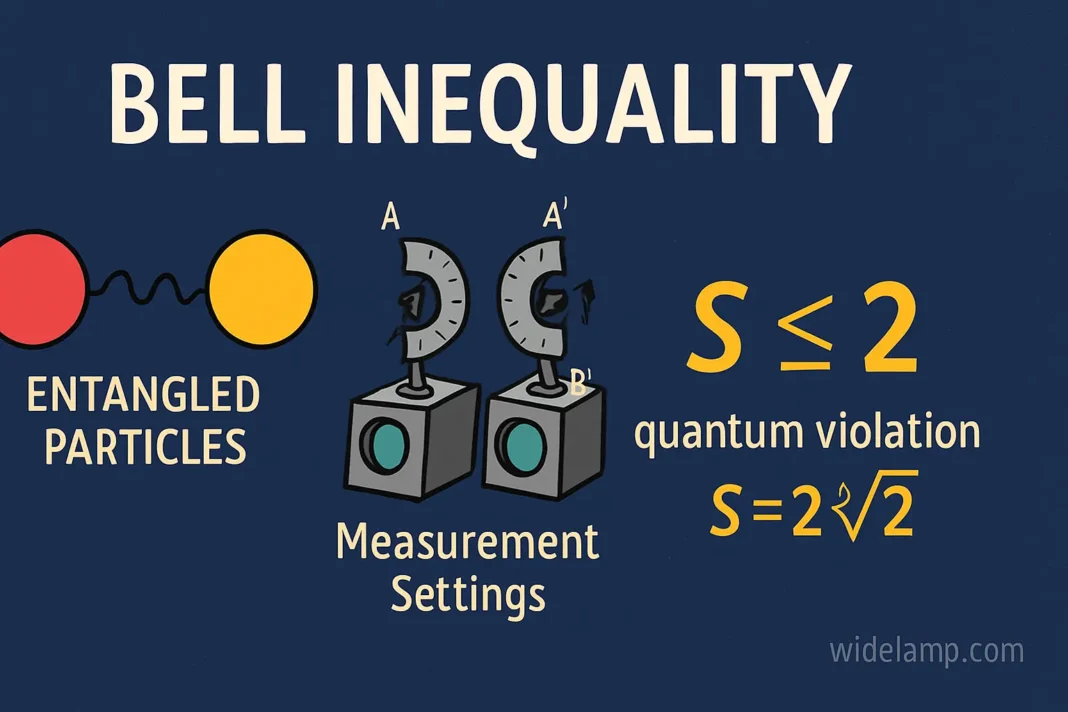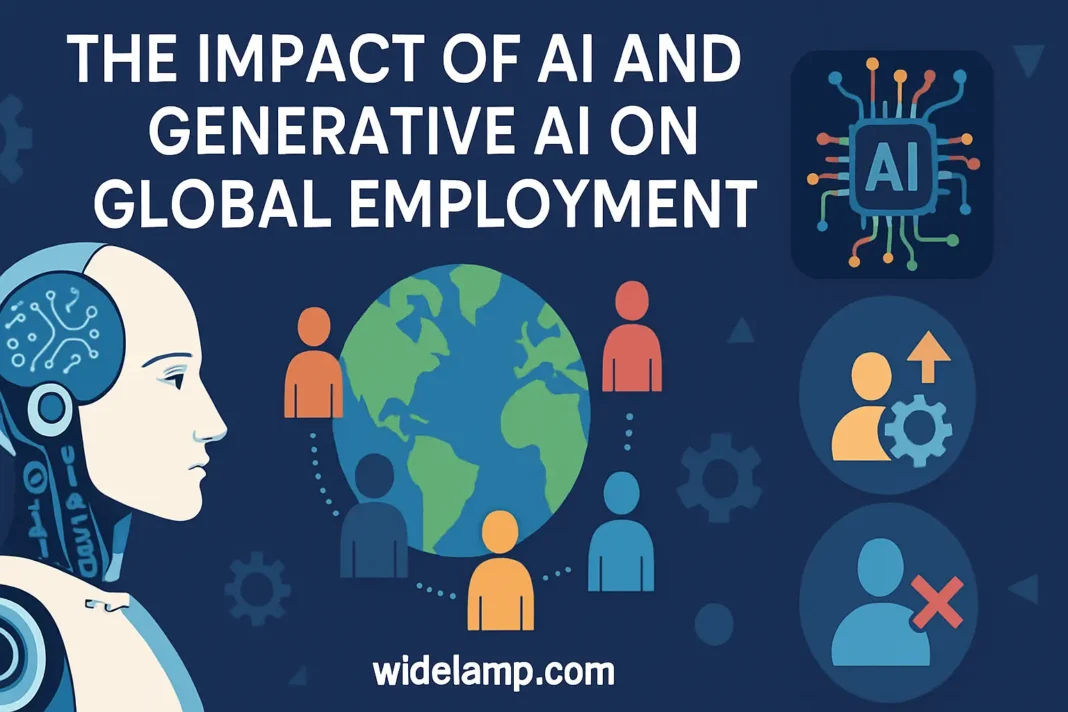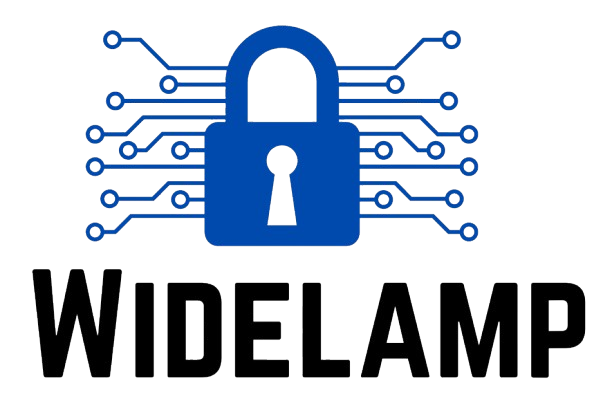|
Getting your Trinity Audio player ready...
|
In the realm of physics, few concepts challenge our classical intuition as profoundly as the Bell Inequality. Introduced by physicist John Stewart Bell in 1964, Bell’s theorem and its associated inequalities serve as a crucial test, pitting the predictions of classical physics against the strange and fascinating world of quantum mechanics. At its core, the Bell Inequality examines the very nature of reality, questioning whether the universe operates on principles we can observe and measure directly or on something far more interconnected.
Table of Contents
Unveiling Reality: What is the Bell Inequality?
The inequality grew out of a debate sparked by the Einstein-Podolsky-Rosen (EPR) paradox, which highlighted the bizarre phenomenon of quantum entanglement. It provides a mathematical framework to test a concept known as local realism, which is a cornerstone of classical physics.

The Classical Worldview: Local Realism
To understand Bell’s Inequality, one must first grasp the two fundamental ideas it tests: locality and realism.
- Realism is the intuitive belief that objects possess definite properties, such as position or spin, regardless of whether we are measuring them. In this view, a spinning coin has a definite side (heads or tails) facing up, even if it is covered.
- Locality is the principle that an object can only be influenced by its immediate surroundings. Any interaction between two objects is limited by the speed of light; nothing can instantaneously affect something else at a great distance.
Combined, local realism suggests a universe where all outcomes are determined by pre-existing properties of particles and local interactions. If quantum measurements appear random, this view suggests it’s only because of our incomplete knowledge of certain hidden variables—underlying properties that quantum mechanics doesn’t account for.

Read More: 17 Advance Questions for Quantum Computing help to understand Physics behind the Quantum Computing
Key Scientific Concepts Defined
To delve deeper, a few key terms are essential:
- Quantum Entanglement: This occurs when two or more particles become linked in such a way that their fates are intertwined, no matter how far apart they are. Measuring a property of one particle, such as its spin, instantaneously influences the corresponding property of the other particle.
- Spin: An intrinsic form of angular momentum carried by elementary particles. It is a quantum mechanical property without a true classical analogue, but can be visualized as the particle spinning on its axis, creating a magnetic dipole. It is quantized, meaning it can only take on discrete values (e.g., “up” or “down”).
- Superposition: Before a measurement is made, a quantum system can exist in a combination of multiple possible states at once. For example, an electron can be in a superposition of both spin-up and spin-down states simultaneously.
- Wavefunction Collapse: The act of measuring a quantum system in a superposition forces it to “choose” one of its possible states. This process is known as the collapse of the wavefunction.
The Mathematical Formulation: The CHSH Inequality
John Bell’s original inequality was groundbreaking, but a more practical version for experiments was developed in 1969 by John Clauser, Michael Horne, Abner Shimony, and Richard Holt, known as the CHSH inequality.
Imagine the standard Bell test setup: a source emits a pair of entangled particles, sending one to an observer named Alice and the other to an observer named Bob. Alice and Bob are far apart and cannot communicate.
- Alice can measure her particle’s property (e.g., spin) along one of two chosen detector settings, labeled a and a’.
- Bob can similarly measure his particle along one of two settings, b and b’.
- Each measurement yields a result of either +1 or -1 (representing spin-up or spin-down).
They repeat this experiment many times, randomly switching between their detector settings. Afterward, they compare their results to calculate a correlation value for each of the four combinations of settings (ab, ab’, a’b, a’b’).
The CHSH inequality is expressed through a value, S, calculated from these correlations:
S = E(a, b) – E(a, b’) + E(a’, b) + E(a’, b’)
Where E(a,b) is the statistical correlation of the outcomes from detector settings a and b.
According to local realism, the value of S is fundamentally limited. The hidden variables that pre-determine the measurement outcomes cannot produce correlations strong enough to exceed a certain bound. The CHSH inequality states that if local realism is true, then:
|S| ≤ 2
Quantum Mechanics Breaks the Rules
Here lies the revolutionary insight: the predictions of quantum mechanics shatter this classical limit. Quantum theory predicts that due to the nature of entanglement, the correlations can be much stronger. By choosing the detector angles appropriately (e.g., 0°, 45°, 90°, and 135°), quantum mechanics predicts that the value of S can reach:
|S| = 2√2 ≈ 2.82
This value is clearly greater than 2, directly violating the inequality set by local realism.
The Verdict: A Non-Local Universe
Beginning with the work of John Clauser and Stuart Freedman in 1972, numerous Bell tests have been conducted with increasing precision. The results have been consistent and clear: physical systems obey the predictions of quantum mechanics, yielding S values around 2.8, and definitively violating the CHSH inequality.
These findings demonstrate that the world is not governed by local realism. The violation forces us to abandon at least one of the core assumptions of classical physics. It proves that any hidden variable theory attempting to explain quantum mechanics must be non-local, allowing for the “spooky action at a distance” that Einstein found so unsettling. Ultimately, Bell’s theorem serves as a powerful testament to the fundamental strangeness of the quantum world, proving that reality is far more interconnected and less certain than our everyday experience suggests.
Important Questions and Answers
-
What is Bell’s Inequality?
Bell’s Inequality is a mathematical constraint that tests one of the most fundamental assumptions about reality: whether the universe operates according to local realism. Introduced by physicist John Stewart Bell in 1964, it provides a way to experimentally distinguish between classical physics predictions and quantum mechanics predictions.
The inequality sets a limit on how strongly correlated the measurement results of two distant particles can be if they follow classical physics. Specifically, for the CHSH version of Bell’s inequality, the correlation parameter S must satisfy |S| ≤ 2 under local realism
. However, quantum mechanics predicts that entangled particles can achieve correlations up to S = 2√2 ≈ 2.82, clearly violating this classical limit -
Who discovered Bell’s theorem?
John Stewart Bell, an Irish physicist working at CERN, formulated Bell’s theorem in 1964. His work built upon the earlier Einstein-Podolsky-Rosen (EPR) paradox from 1935, which questioned whether quantum mechanics provided a complete description of physical reality. Bell’s breakthrough was showing that any theory satisfying local realism must obey certain mathematical constraints that quantum mechanics violates
-
What is the EPR paradox?
The Einstein-Podolsky-Rosen (EPR) paradox, proposed in 1935, argued that quantum mechanics was incomplete because it seemed to allow “spooky action at a distance”. Einstein, along with Boris Podolsky and Nathan Rosen, suggested that entangled particles must possess predetermined “hidden variables” that would explain their correlations without requiring instantaneous influence across space.
The EPR argument relied on two key assumptions: locality (objects can only be influenced by their immediate surroundings) and realism (particles have definite properties independent of measurement)
. They believed these assumptions were so fundamental that any violation would indicate quantum mechanics was incomplete rather than that reality itself was non-local -
What does local realism mean?
Local realism combines two classical physics principles:
Locality: Objects can only be influenced by their immediate surroundings, and no influence can travel faster than the speed of light. This means measuring one particle cannot instantaneously affect another distant particle
.
Realism: Objects possess definite properties (like position, momentum, or spin) independent of whether we observe them. A particle has specific characteristics even when no measurement is being performed
.
Local realism suggests a universe where all measurement outcomes are determined by pre-existing local properties, making quantum correlations explainable through classical means -
What is the CHSH inequality?
The CHSH inequality, developed by John Clauser, Michael Horne, Abner Shimony, and Richard Holt in 1969, is the most practical version of Bell’s inequality for experimental testing. It’s expressed as:
S = E(a,b) – E(a,b’) + E(a’,b) + E(a’,b’)
Where E(a,b) represents the correlation between measurement results when Alice uses setting ‘a’ and Bob uses setting ‘b’
. Under local realism, this parameter must satisfy |S| ≤ 2. However, quantum mechanics can achieve violations up to the Tsirelson bound of 2√2 ≈ 2.82.
The CHSH inequality is particularly useful because it can be tested with realistic experimental setups using polarized photons or electron spins -
What is Tsirelson’s bound?
Tsirelson’s bound, named after Boris Tsirelson, represents the maximum quantum mechanical violation of Bell inequalities. For the CHSH inequality, this bound is 2√2 ≈ 2.82, meaning quantum correlations cannot exceed this value even with perfect entanglement.
This bound is significant because it shows that quantum mechanics, while violating classical limits, still has its own constraints
. Theories that allow stronger correlations (up to the algebraic maximum of 4) would permit faster-than-light communication, violating causality -
How is a Bell test performed?
A Bell test experiment involves several key components:
Entangled particle generation: A source creates pairs of entangled particles (typically photons or electrons) and sends them to two distant locations
.
Random measurement choices: Alice and Bob independently choose measurement settings randomly, preventing any coordination between the particles and measurement apparatus
.
Simultaneous measurements: Both parties measure their particles using their chosen settings, recording results as +1 or -1
.
Statistical analysis: After many trials, researchers calculate correlations for different setting combinations and compute the Bell parameter S
.
Comparison with bounds: If S exceeds 2, Bell’s inequality is violated, supporting quantum mechanics over local hidden variable theories -
What are hidden variables?
Hidden variables are hypothetical properties that particles might possess but that quantum mechanics doesn’t account for. Einstein and others proposed these variables to explain quantum correlations without accepting non-locality.
In hidden variable theories, measurement outcomes would be predetermined by these unseen properties, making quantum randomness merely apparent rather than fundamental.
Bell’s theorem proves that any such theory must be non-local to reproduce quantum predictions -
What makes a Bell test ‘loophole-free’?
A loophole-free Bell test must close all potential experimental weaknesses that could allow classical explanations for observed violations. The main loopholes include:
Detection loophole: Occurs when particle detectors are inefficient, potentially missing particles that would restore classical correlations
.
Locality loophole: Arises if measurement choices or results could influence each other through light-speed communication
.
Freedom-of-choice loophole: Suggests that measurement settings might be correlated with hidden variables, invalidating the test
.
The first loophole-free Bell tests were achieved in 2015 by multiple groups, finally providing definitive proof that nature violates local realism -
Who won the 2022 Nobel Prize for Bell test experiments?
The 2022 Nobel Prize in Physics was awarded jointly to Alain Aspect, John F. Clauser, and Anton Zeilinger “for experiments with entangled photons, establishing the violation of Bell inequalities and pioneering quantum information science”.
John Clauser performed the first Bell test in 1972, providing initial experimental evidence for quantum mechanics.
Alain Aspect conducted more refined experiments in the 1980s that closed additional loopholes. Anton Zeilinger pioneered quantum teleportation and other advanced quantum information protocols -
What experimental setup is used in Bell tests?
Modern Bell tests typically use the following setup:
Photon source: Generates entangled photon pairs through processes like spontaneous parametric down-conversion
.
Beam splitters: Direct photons to Alice and Bob at distant locations, ensuring space-like separation
.
Polarization analyzers: Allow measurement of photon polarization along different angles chosen randomly
.
Fast electronics: Ensure measurement choices are made after photon emission but before detection, preventing communication between sites
.
Statistical analysis: Computers calculate correlations and test for Bell inequality violations across thousands of trials -
How is the Bell inequality used in quantum cryptography?
Bell inequality violations provide security guarantees for quantum key distribution (QKD) protocols. When Alice and Bob detect Bell violations, they can be certain that no eavesdropper has intercepted their quantum states without disturbing the correlations.
In device-independent QKD, Bell test violations certify the security of cryptographic keys without requiring trust in the measurement devices themselves
. This represents the strongest possible form of quantum cryptographic security -
What are the practical applications of Bell test violations?
Beyond cryptography, Bell inequality violations enable several quantum technologies:
Quantum computing: Entanglement provides computational advantages in quantum algorithms, with Bell violations certifying genuine quantum behavior
.
Quantum sensors: Entangled particles can achieve measurement precision beyond classical limits, useful for gravitational wave detection and atomic clocks
.
Random number generation: Bell violations certify that quantum randomness is genuinely unpredictable, crucial for cryptographic applications
.
Quantum networks: Bell tests verify entanglement distribution across quantum communication networks -
How does Bell’s theorem relate to quantum computing?
Bell’s theorem is fundamental to quantum computing because it demonstrates the non-classical nature of entanglement, which is essential for quantum computational advantage. Quantum computers rely on entangled qubits to perform calculations impossible with classical computers.
Bell test violations serve as benchmarks for quantum computer performance, verifying that quantum processors are operating in genuinely quantum regimes rather than classical simulations -
Why does quantum mechanics violate Bell’s inequality?
Quantum mechanics violates Bell’s inequality because of the fundamental properties of entanglement. When particles are entangled, they don’t possess independent, predetermined properties as assumed by local realism.
Instead, entangled particles exist in superposition states where measurement outcomes are genuinely correlated across space, not because of hidden communication but due to the non-local nature of quantum mechanics itself
. The act of measurement on one particle instantaneously determines the state of its entangled partner, regardless of distance -
What does Bell inequality violation tell us about reality?
Bell inequality violations force us to abandon at least one fundamental assumption about reality. Either:
Locality is false: Entangled particles can influence each other instantaneously across any distance, suggesting “spooky action at a distance” is real.Realism is false: Particles don’t possess definite properties until measured, meaning physical reality is fundamentally different from our everyday experience.
Most physicists interpret these violations as showing that the universe is not locally real in the classical sense, though debate continues about the exact implications
-
Is the universe locally real?
According to Bell test experiments, the universe is not locally real as Einstein envisioned. The 2022 Nobel Prize recognized definitive experimental proof that local hidden variable theories cannot explain quantum phenomena.
This doesn’t mean the universe lacks reality, but rather that our classical intuitions about locality and predetermined properties don’t apply at quantum scales.
The universe exhibits genuine quantum non-locality, where spatially separated events can be correlated in ways impossible under classical physics.
The implications continue to be debated, but the experimental evidence is clear: nature violates Bell inequalities, confirming the strange predictions of quantum mechanics over classical local realism




